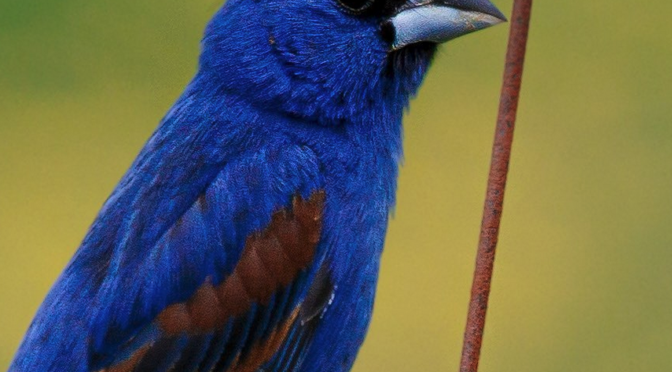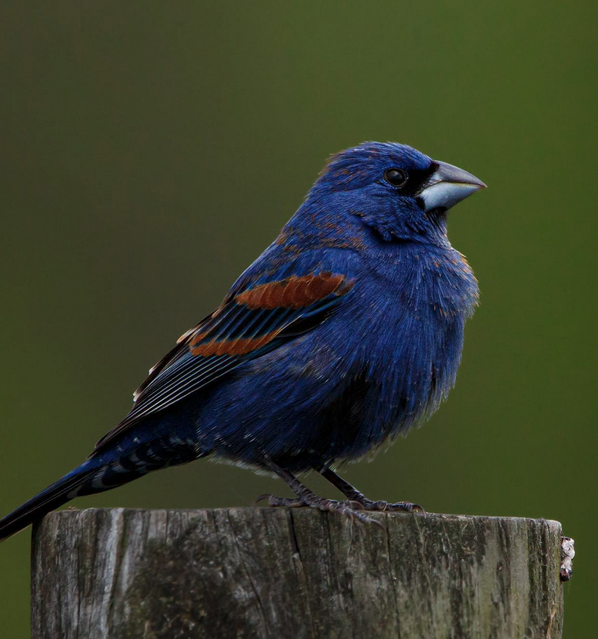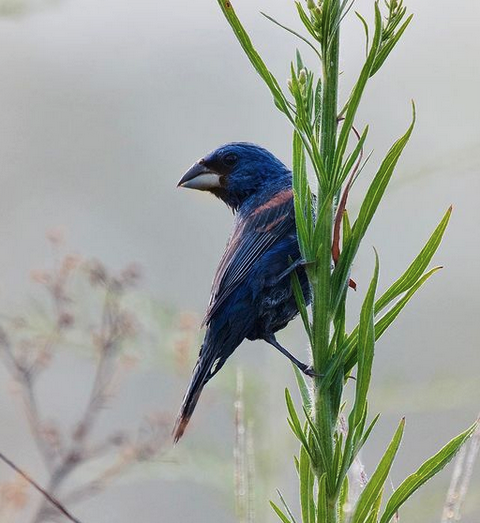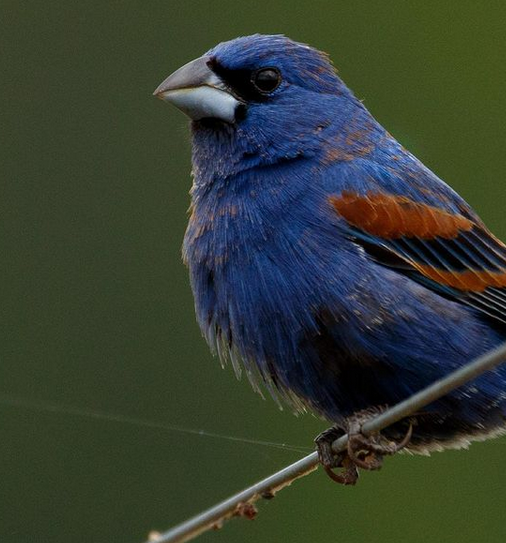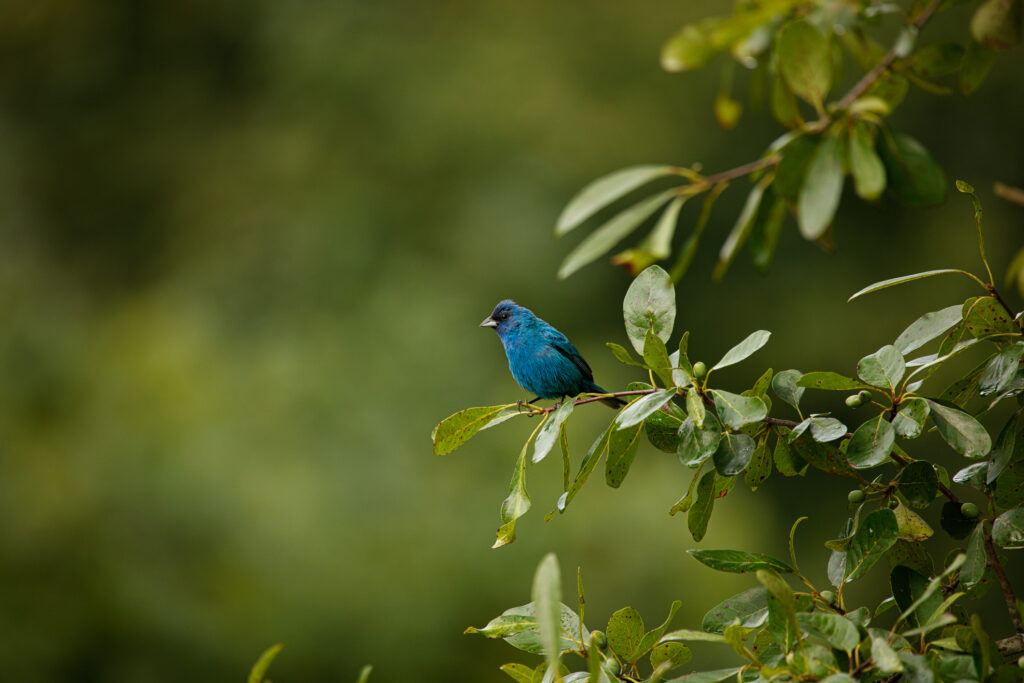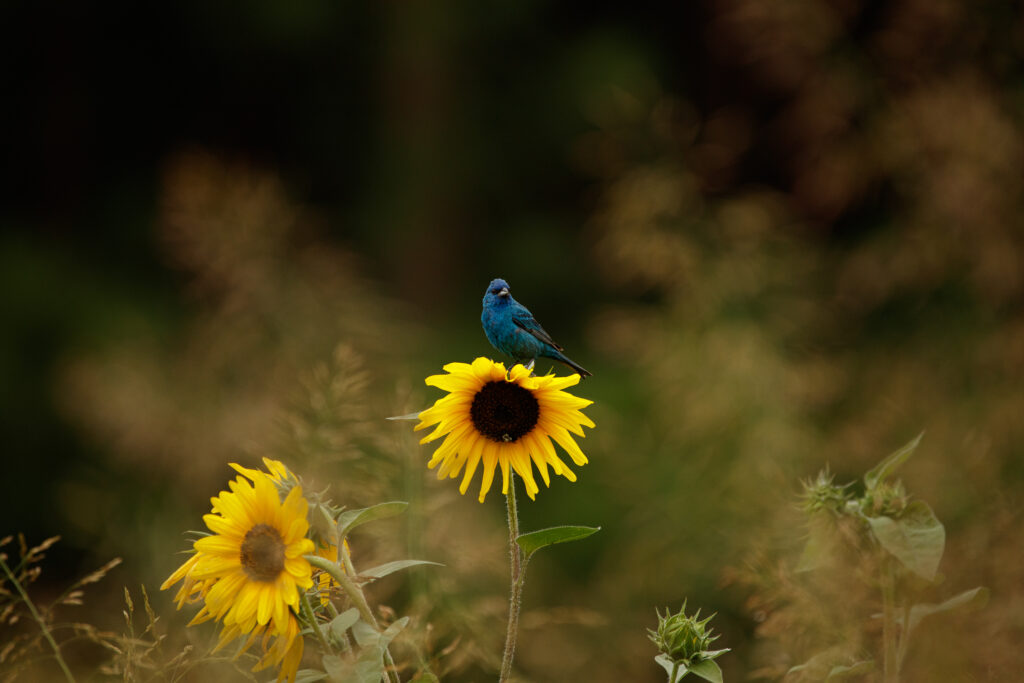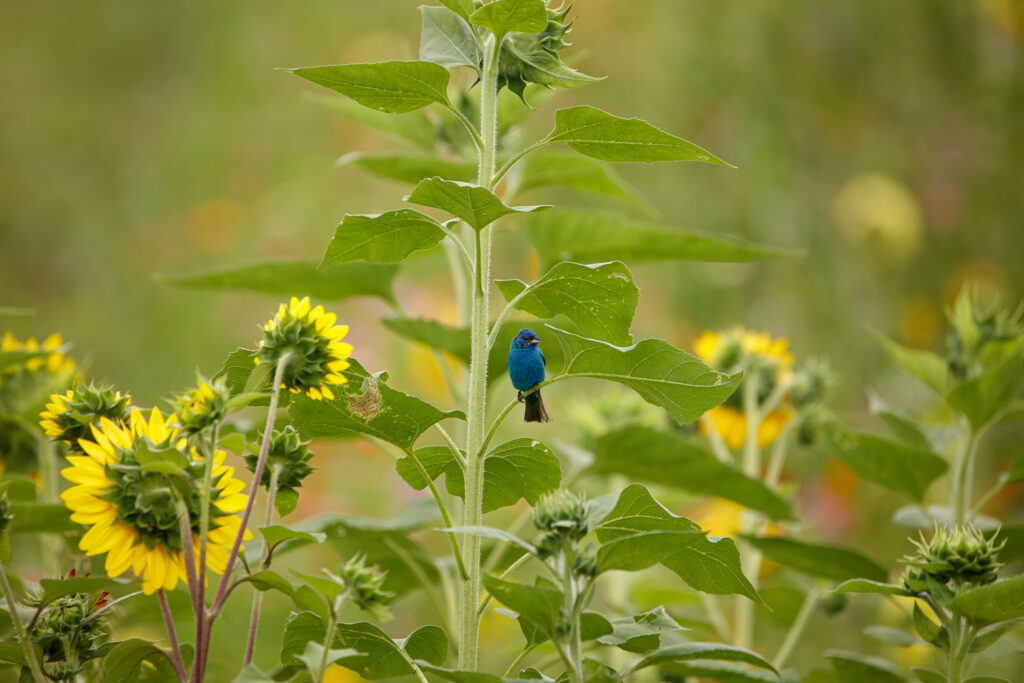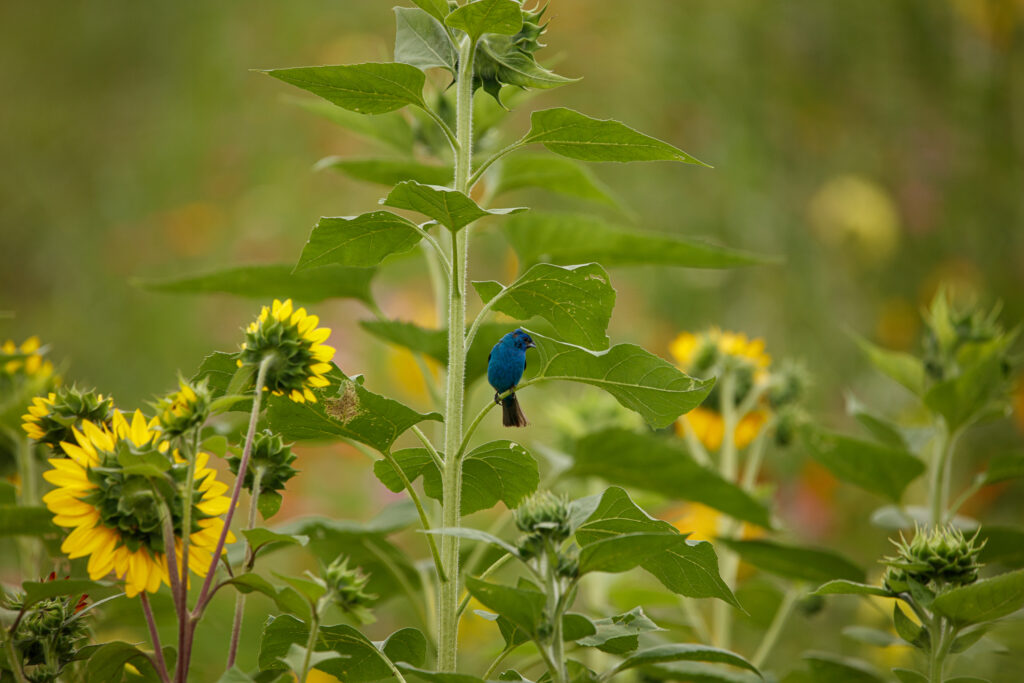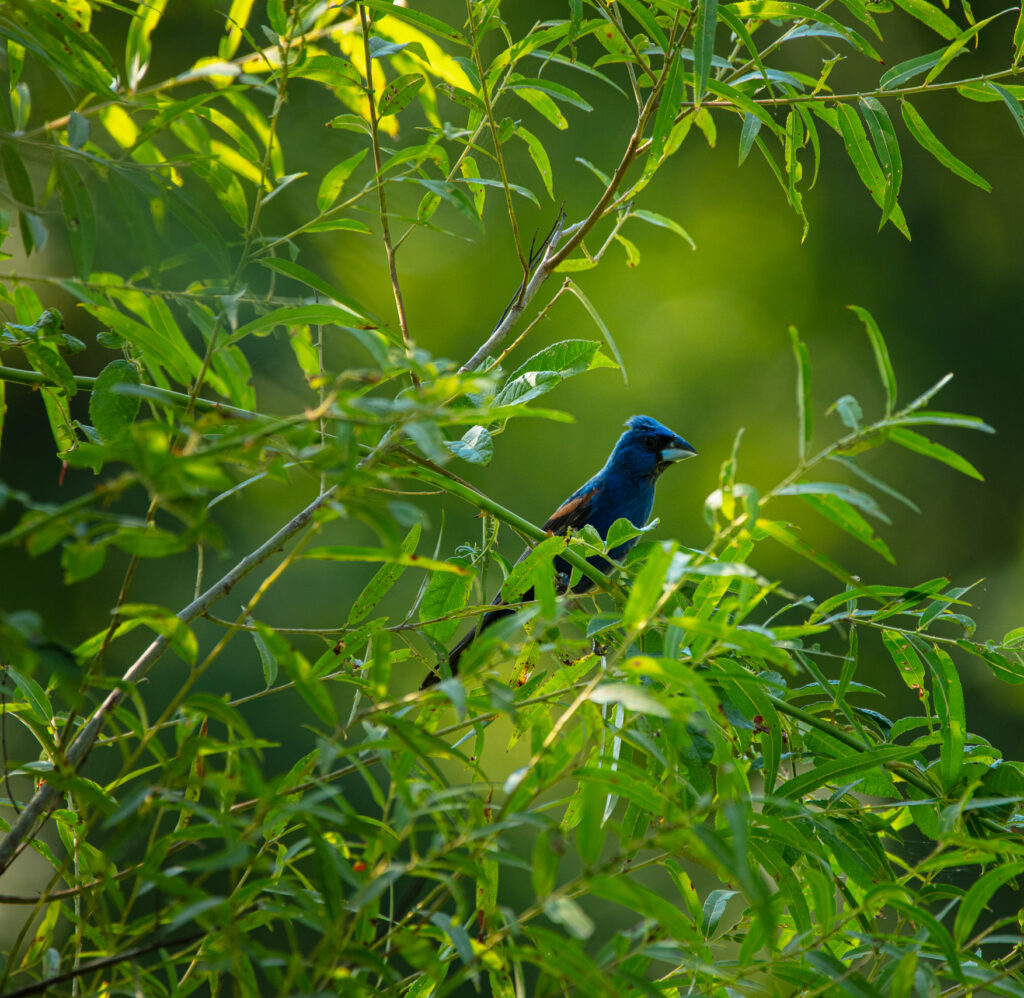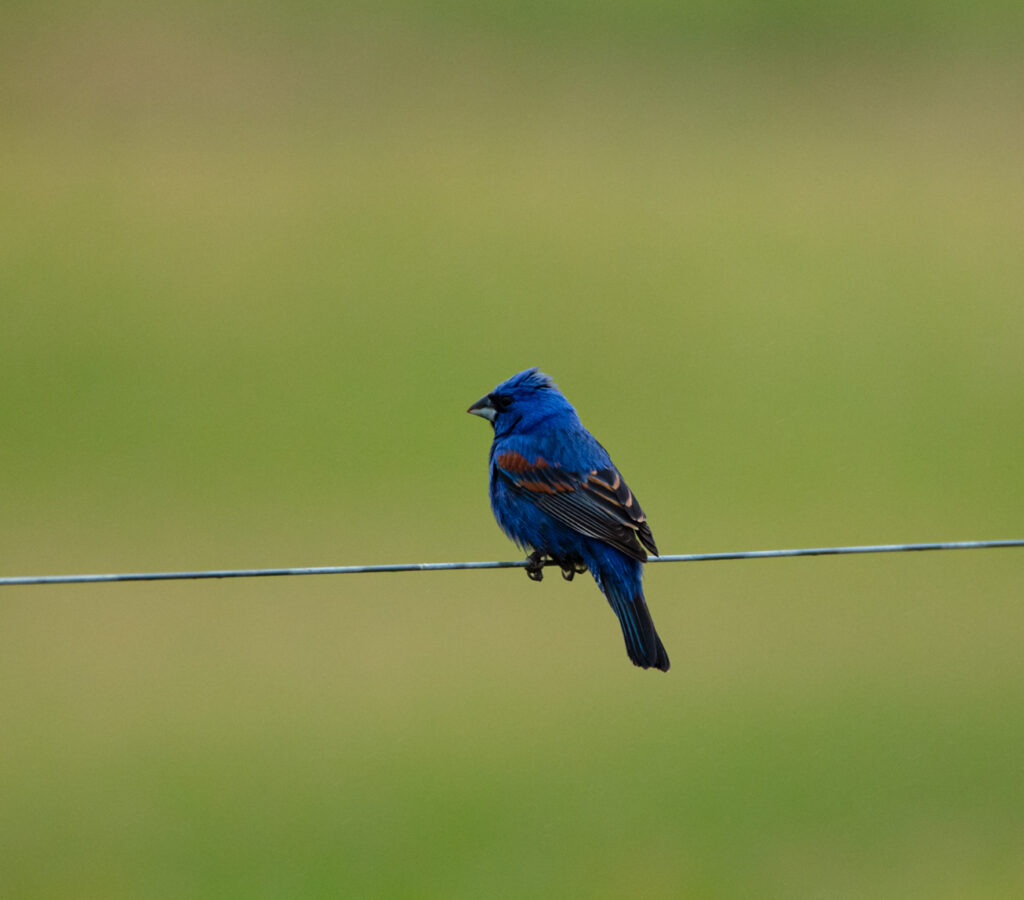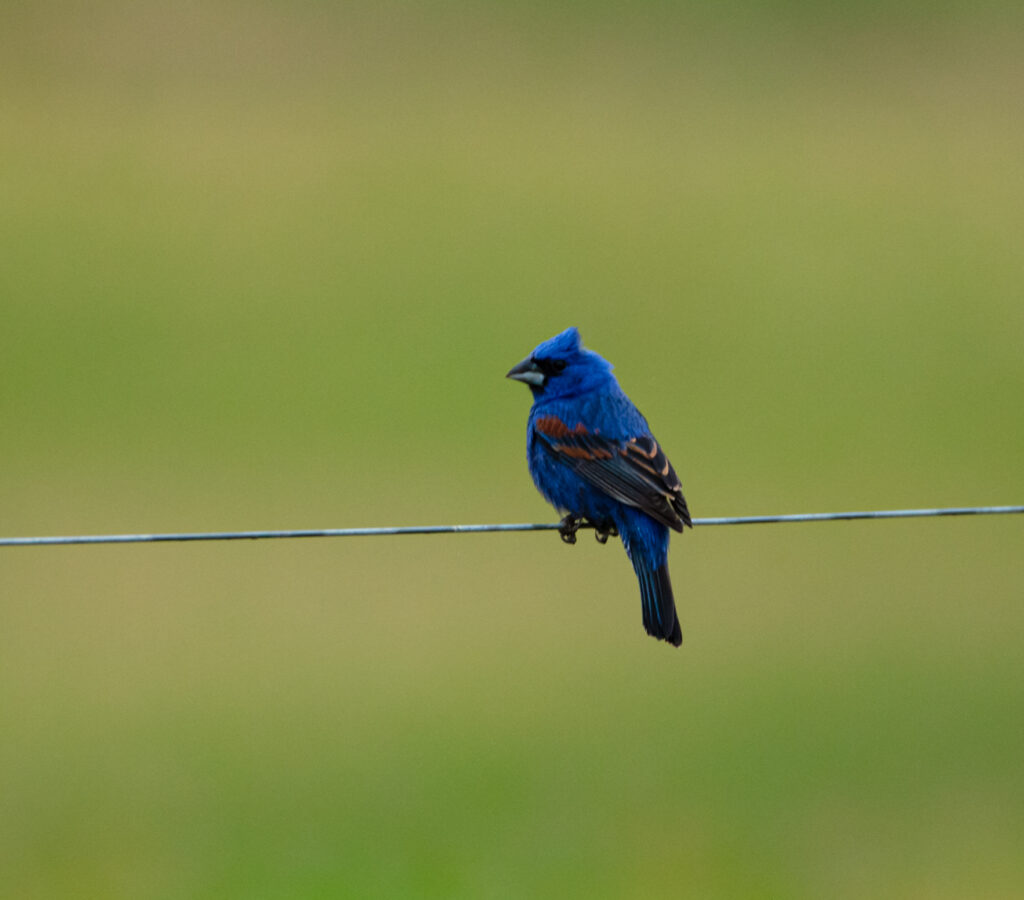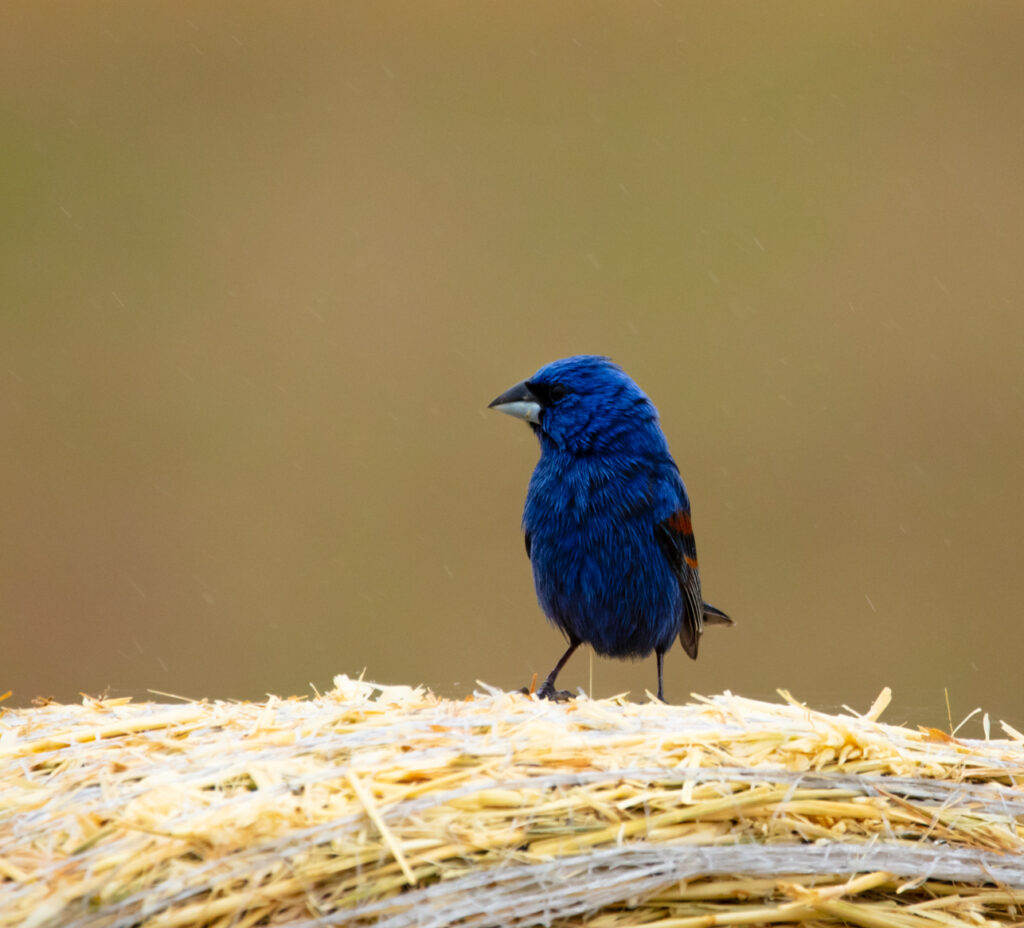Great to see another familiar feathered face has made its way back to North Carolina this spring, the Blue Grosbeak! I photographed this handsome earlier this week near Greensboro. He was quite content to chill out on the fence line surveying his territory. Every now and again, he’d take off to chase the females in the area before returning to his favorite spot on the wire fence overlooking the fields.
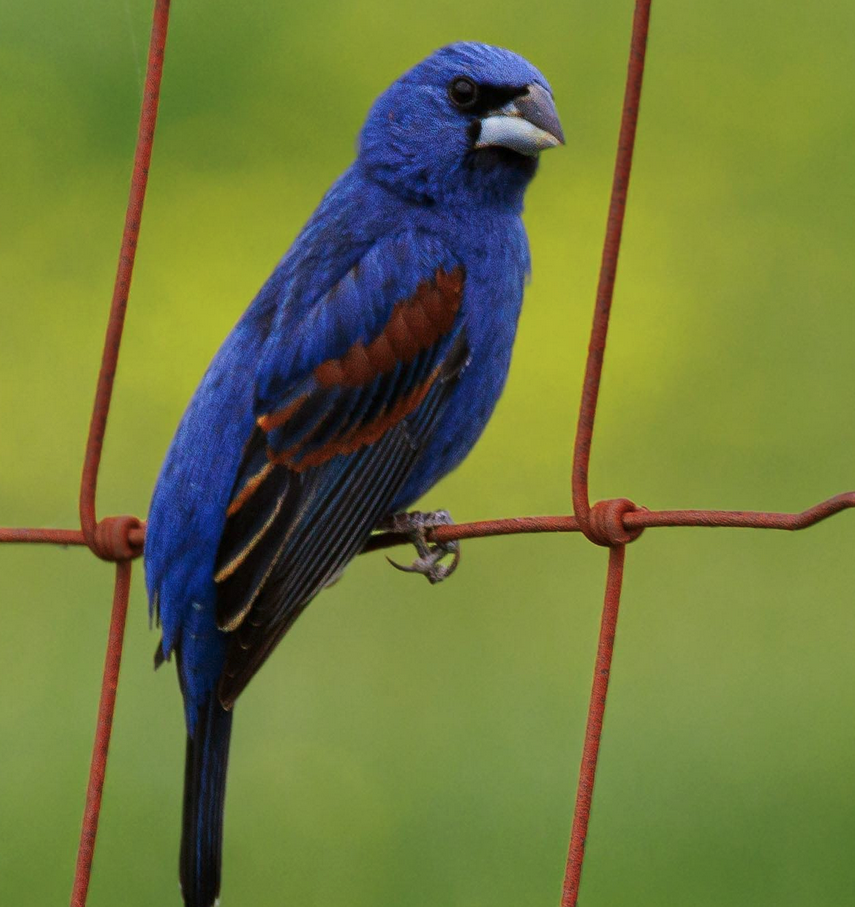
Did you know that Blue Grosbeaks are actually related to the State Bird of NC? If you look closely at his face you might see the resemblance to our local favorite, the Northern Cardinal. Although the Blue Grosbeak doesn’t share the crimson hues of the Cardinal, they are indeed of the same family of Cardinalidae. All the members of this family group have thick triangular shaped bills, good for crushing hard seeds, which make up a high percentage of their diets. Interestingly, both Grosbeaks and Cardinals will switch over to eating mainly insects (especially juicy grasshoppers for the Grosbeak) during the nesting season to provide a high protein diet for their young.
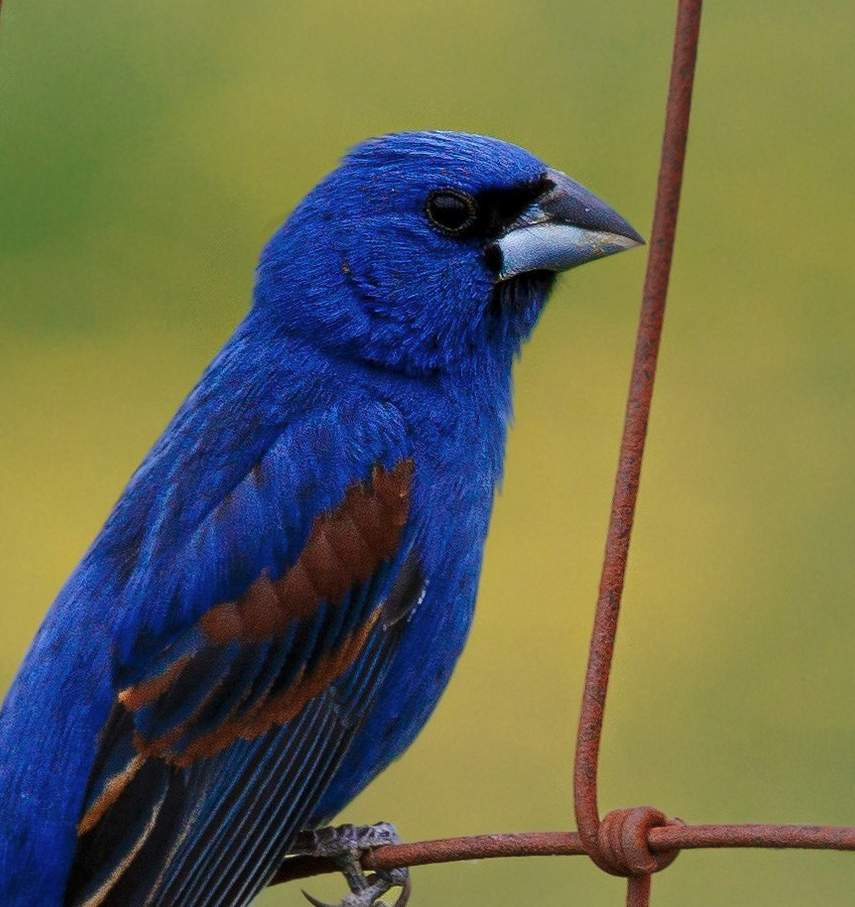
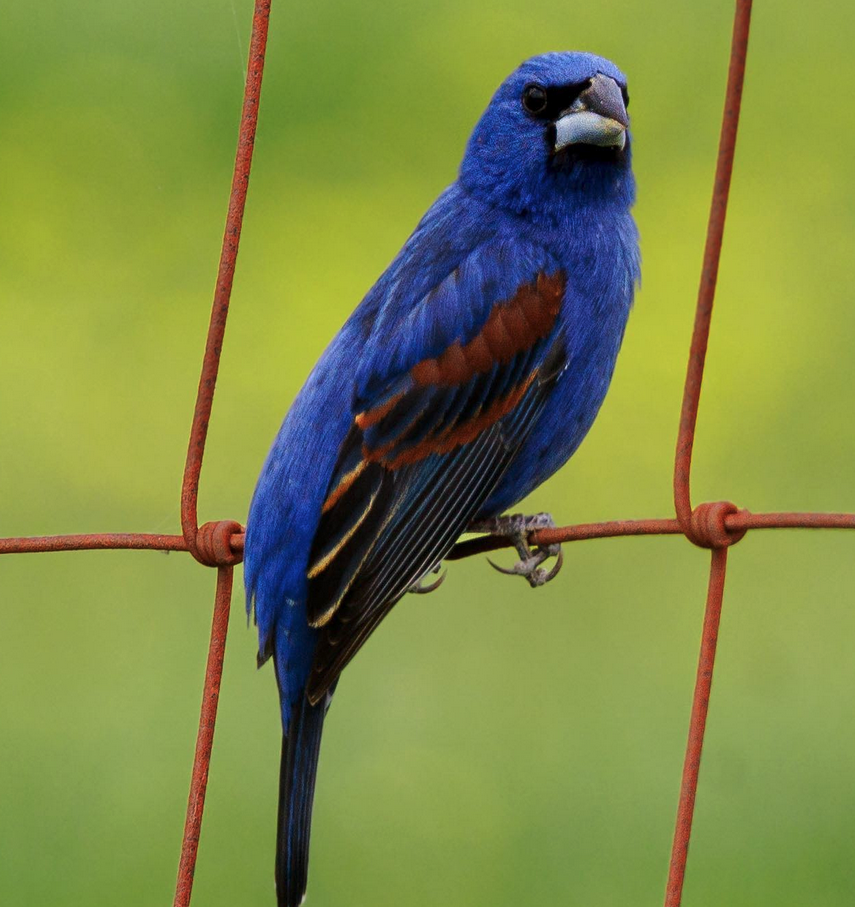
You can attract Blue Grosbeaks to your own yard by providing Black oil sunflower seed, raw peanuts, sunflower seed chips, millet and safflower seeds in your feeders.
When birding away from home, look for Grosbeaks perching on telephone wires, fence posts and on the tops of trees overlooking grassy fields containing thickets and perching on the tops of shrubs lining agricultural areas.
These beautiful birds will spend the summer in NC through mid October so you’ve got plenty of time to get out there and enjoy them this year.
Photos by @sally_siko of @bestlife_birding on my mighty mirrorless monster, the @canonusa #R5

